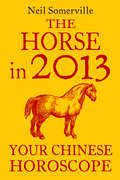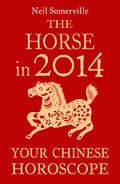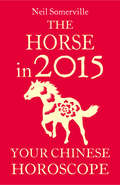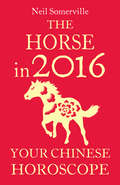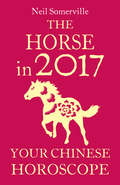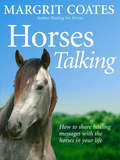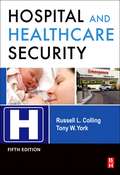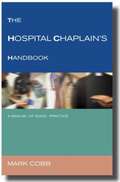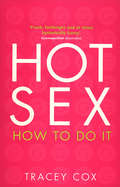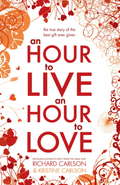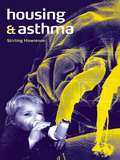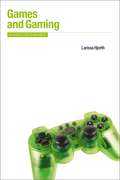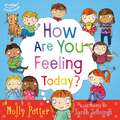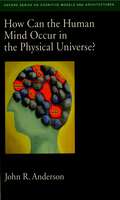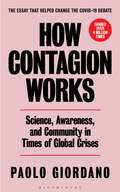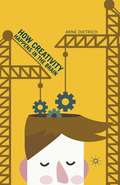- Table View
- List View
The Horse in 2013: Your Chinese Horoscope
by Neil SomervilleWhat the year of the snake holds in store for the horse. This complete guide contains all the predictions you will need for your Chinese zodiac sign to take you into the year ahead.
The Horse in 2014: What The Year Of The Horse Holds In Store For You
by Neil SomervilleThe year 2014 is the Chinese Year of the Horse – what will this mean for you? This complete guide contains all the predictions you will need to take you into the year ahead – a lively fast-paced year favouring ideas, innovation and personal growth.
The Horse in 2015: What The Year Of The Sheep Holds In Store For You
by Neil SomervilleThe year 2015 is the Chinese Year of the Goat – what will this mean for you? This complete guide contains all the predictions you will need to take you into the year ahead – an interesting year offering scope, awareness and much possibility.
The Horse in 2016: Your Chinese Horoscope
by Neil SomervilleThe year 2016 is the Chinese Year of the Monkey – what will this mean for you? This complete guide contains all the predictions you will need to take you into the year ahead – an interesting year offering scope, awareness and much possibility.
The Horse in 2017: Your Chinese Horoscope
by Neil SomervilleThe year 2017 is the Chinese Year of the Rooster – what will this mean for you? This complete guide contains all the predictions you will need to take you into the year ahead – an interesting year offering scope, awareness and much possibility.
Horses Talking: How to share healing messages with the horses in your life
by Margrit CoatesFollowing the success of 'Healing for Horses', in this book, Margrit Coates explains how readers can learn to interact with equines on a deep level. She gives practical advice on how to tune into your horse and understand what he or she is trying to communicate to you about wellbeing. You will discover how to sense what your horse is feeling and when it is healthy or suffering. You will also learn how to exchange healing messages, soul to soul, with your horse in order to improve their health and yours, and to strengthen the bond between you. Included are many fascinating case histories of horses and those who care for them, showing how they have mutually benefited by learning to open channels of communication. Intended for every horse owner, rider and handler - and the many thousands of people around the world who work with horses including vets, complementary therapists, grooms, stable hands, trainers, instructors and breeders. This book is for anyone who loves horses.
Hospital and Healthcare Security
by Tony W York Russell CollingHospital and Healthcare Security, Fifth Edition, examines the issues inherent to healthcare and hospital security, including licensing, regulatory requirements, litigation, and accreditation standards. Building on the solid foundation laid down in the first four editions, the book looks at the changes that have occurred in healthcare security since the last edition was published in 2001. It consists of 25 chapters and presents examples from Canada, the UK, and the United States. It first provides an overview of the healthcare environment, including categories of healthcare, types of hospitals, the nonhospital side of healthcare, and the different stakeholders. It then describes basic healthcare security risks/vulnerabilities and offers tips on security management planning. The book also discusses security department organization and staffing, management and supervision of the security force, training of security personnel, security force deployment and patrol activities, employee involvement and awareness of security issues, implementation of physical security safeguards, parking control and security, and emergency preparedness. Healthcare security practitioners and hospital administrators will find this book invaluable.FEATURES AND BENEFITS:* Practical support for healthcare security professionals, including operationally proven policies, and procedures* Specific assistance in preparing plans and materials tailored to healthcare security programs* Summary tables and sample forms bring together key data, facilitating ROI discussions with administrators and other departments* General principles clearly laid out so readers can apply the industry standards most appropriate to their own environmentNEW TO THIS EDITION:* Quick-start section for hospital administrators who need an overview of security issues and best practices
The Hospital Chaplain's Handbook: A Guide For Good Practice
by Mark CobbAnswering the question 'What do chaplains do?'
Hostages of Each Other: The Transformation of Nuclear Safety since Three Mile Island
by Joseph V. ReesRees offers the first in-depth account of the extraordinary transformation in the safety standards, operations, and management of the nation's nuclear facilities spurred by the accident at Three Mile Island. Detailing the surprising success of self-regulation within the nuclear industry, his book reveals the possibilities for effective communitarian action.
Hot Flush: Motherhood, the Menopause and Me
by Michelle HeatonAt the age of thirty-three, Michelle Heaton, singer, TV presenter, star of the hit ITV show The Real Full Monty, mother and wife underwent a double mastectomy and hysterectomy to reduce the risk of cancer caused by the BRCA gene mutation. The journey that Michelle’s body embarked upon following the surgeries led her into the menopause in her mid-thirties.In Hot Flush, Michelle traces her path from pop stardom with Liberty X through her burgeoning television career and how she came to discover the truth about the gene mutation and its consequences for her. Though her story is undoubtedly unique, what’s not is her understanding of living and dealing with the menopause as a hardworking mother and wife, and it is this wisdom that she wants to share with other women – over 13 million women in the UK – estimated to be experiencing the menopause.Candid and honest, Hot Flush details Michelle’s struggles with dealing with the menopause in her own head as well as in her marriage, family life and the work place. She details the emotional and physical challenges she has faced – the explosive moods, the hot flushes and the mourning of the loss of a woman’s sex appeal. Along the way, she offers real help and advice on how to stay healthy in mind and body.Inspiring, raw and unfailingly honest, Hot Flush is a candid approach to introducing your body to its next chapter.
Hot Sex: Pocket Edition
by Tracey CoxA fantastic, funky and eye-catching book that tells you all you need to know about sex and exactly how to do it. It's frank, explicit, easy-to-follow, funny and gives you all the answers to the questions you never dared ask your friends. Perfect for beginners and all those who want to spice up their sex life at any age. And an ideal gift for lovers. The chapters (eg Fantasies, Foreplay, Sex Myths) have sections geared specifically towards men and women plus there's advice on relationship issues, building communication skills and real-life sex diaries.'Frank, forthright and at times hysterically funny ... the one sex manual you'll want to read cover to cover' - Pat Ingram, Editor-in-Chief Cosmopolitan (Australia)'Punchy and to the point... essential reading' - Dr Jane Hall, sex therapist
Hot Topics in Human Reproduction: Ethics, Law and Society (Reproductive Medicine for Clinicians #3)
by Joseph G. Schenker Martin H. Birkhaeuser Andrea R. Genazzani Liselotte Mettler John J. SciarraThis new volume in the Reproductive Medicine for Clinicians series of the International Academy of Human Reproduction (IAHR) focuses on current hot topics in the field, their ethical and legal aspects and their impact on society.It covers topics such as Covid-19, religious and philosophical controversies, possibilities that new technologies offer, human reproductive cloning problems, future challenges related to the heritable gene editing, therapeutic use of stem cells and stem cell factors and the role of receptors in steroids hormone action.This volume also offers an analysis of important innovations and new possibilities such as the use of artificial intelligence in reproductive medicine and the future of prenatal testing. The volume also discusses the issues of pregnancies in advanced paternal age, ethical and legal aspects of gametes donation, sex preselection, surrogate motherhood and infertility in overweight or obese PCOS patients. Chapters on the ethical and legal aspects of fertility preservation in woman, in children with cancer, and in patients sparing treatments in gynecological oncology are also included. This new volume in the series is a valuable resource for gynecologists, obstetricians, endocrinologists, general practitioners and all specialists dealing with reproductive health.
Hotel Ritz - Comparing Mexican and U.S. Street Prostitutes: Factors in HIV/AIDS Transmission
by R Dennis Shelby David J BellisExplore ways to reduce the rate of HIV infection in street prostitutes--and the inescapable connection between the heroin trade, prostitution, and HIV!This unique book draws on face-to-face interviews that the author conducted on the streets, with heroin-addicted street prostitutes in Southern California and their counterparts in four large Mexican cities. Author David James Bellis illustrates the significant--and surprising--differences in the risk of exposure to HIV and other STDs that exist between street prostitutes in the two countries arising from national differences in the legality, sociology, and economics of sex work. He points out that Mexican prostitutes, for whom sex work is a simple means of livelihood, are “choir girls” compared with their beaten-up, drug-addicted sisters north of the border who perform sex for drug money and are at much greater risk of HIV and other diseases, like Hepatitis C. This book explores those differences, suggesting new directions for United States prostitution and heroin-control policies--laws currently so interwoven that they reinforce each other, accounting for a deadly circle of crime and disease. In addition to the fascinating results of the author's interviews with 72 female street prostitutes in San Bernardino, California, and 102 more in Tijuana, Cd. Juárez, Cd. Victória, and Cuernavaca regarding their personal sexual, drug, and health practices, and their criminal histories, Hotel Ritz-Comparing Mexican and U.S. Street Prostitutes: Factors in HIV/AIDS Transmission explores: the licensing process for legal prostitutes in Mexico the medical testing that Mexico requires prostitutes to undergo the differences in what United States and Mexican prostitutes know about HIV transmission the difference in condom use between United States and Mexican prostitutes the potential benefits of reforming prostitution and drug laws in both countries the benefits of making methadone maintenence and syringes-and heroin-free for heroin-addicted prostitutes the proportion of United States/Mexican prostitutes who would quit the trade if they learned they had AIDS how the social support system in the United States (housing subsidies, TANF/AFDC money, food stamps, etc.) leads to a greater proportion of drug-addicted prostitutes than are found in Mexico Hotel Ritz-Comparing Mexican and U.S. Street Prostitutes: Factors in HIV/AIDS Transmission also provides you with a look at the hierarchy of female sex workers, an explanation of the etiology of AIDS transmission, and a concise history of heroin and prostitution. Helpful tables and an appendix containing the author's survey questions make the data in this well-referenced book easily understandable.
Hotel Ritz - Comparing Mexican and U.S. Street Prostitutes: Factors in HIV/AIDS Transmission
by R Dennis Shelby David J BellisExplore ways to reduce the rate of HIV infection in street prostitutes--and the inescapable connection between the heroin trade, prostitution, and HIV!This unique book draws on face-to-face interviews that the author conducted on the streets, with heroin-addicted street prostitutes in Southern California and their counterparts in four large Mexican cities. Author David James Bellis illustrates the significant--and surprising--differences in the risk of exposure to HIV and other STDs that exist between street prostitutes in the two countries arising from national differences in the legality, sociology, and economics of sex work. He points out that Mexican prostitutes, for whom sex work is a simple means of livelihood, are “choir girls” compared with their beaten-up, drug-addicted sisters north of the border who perform sex for drug money and are at much greater risk of HIV and other diseases, like Hepatitis C. This book explores those differences, suggesting new directions for United States prostitution and heroin-control policies--laws currently so interwoven that they reinforce each other, accounting for a deadly circle of crime and disease. In addition to the fascinating results of the author's interviews with 72 female street prostitutes in San Bernardino, California, and 102 more in Tijuana, Cd. Juárez, Cd. Victória, and Cuernavaca regarding their personal sexual, drug, and health practices, and their criminal histories, Hotel Ritz-Comparing Mexican and U.S. Street Prostitutes: Factors in HIV/AIDS Transmission explores: the licensing process for legal prostitutes in Mexico the medical testing that Mexico requires prostitutes to undergo the differences in what United States and Mexican prostitutes know about HIV transmission the difference in condom use between United States and Mexican prostitutes the potential benefits of reforming prostitution and drug laws in both countries the benefits of making methadone maintenence and syringes-and heroin-free for heroin-addicted prostitutes the proportion of United States/Mexican prostitutes who would quit the trade if they learned they had AIDS how the social support system in the United States (housing subsidies, TANF/AFDC money, food stamps, etc.) leads to a greater proportion of drug-addicted prostitutes than are found in Mexico Hotel Ritz-Comparing Mexican and U.S. Street Prostitutes: Factors in HIV/AIDS Transmission also provides you with a look at the hierarchy of female sex workers, an explanation of the etiology of AIDS transmission, and a concise history of heroin and prostitution. Helpful tables and an appendix containing the author's survey questions make the data in this well-referenced book easily understandable.
An Hour to Live, an Hour to Love: The True Story Of The Best Gift Ever Given
by Richard Carlson Kristine CarlsonIf you had one hour to live and could make just one phone call, who would you call? What would you say?Why are you waiting?Richard Carlson's sudden, tragic death in December 2006 left his millions of fans reeling, but even their many letters, calls, and emails couldn't erase the loss felt by his wife Kristine.To try and come to terms with her loss, she pored over 25 years of love letters, reliving the memories and cherishing her late husband's memory.But one letter stood out. Richard had written to his wife on their 18th wedding anniversary and attempted to answer the question: if you had one hour to live, what would you do, who would you call, and what would you say?AN HOUR TO LOVE is a profoundly moving book that shows the importance of treasuring each day as the incredible gift it is.
Housing and Asthma
by Stirling HowiesonAsthma is on the rise in a number of countries, in this volume Howieson asks what role the built environment has to play and what the construction industry can do to either slow the increase or reverse the trend. Based on the findings of a six-year research project, this book considers all aspects of housing to develop new strategies for dealing with the asthma pandemic in Britain and beyond. With the focus on the design and use pattern of our dwellings, the book looks at tackling the problems inherent in existing housing as well as forging guiding principles for the design of new dwellings, together with a financial assessment of the proposals.
Housing and Asthma
by Stirling HowiesonAsthma is on the rise in a number of countries, in this volume Howieson asks what role the built environment has to play and what the construction industry can do to either slow the increase or reverse the trend. Based on the findings of a six-year research project, this book considers all aspects of housing to develop new strategies for dealing with the asthma pandemic in Britain and beyond. With the focus on the design and use pattern of our dwellings, the book looks at tackling the problems inherent in existing housing as well as forging guiding principles for the design of new dwellings, together with a financial assessment of the proposals.
How and When to Be Your Own Doctor
by Isabelle A. Moser Steve SolomonDr. Isabelle A. Moser and Steve Solomon collaborated on How and When to Be Your Own Doctor. When Solomon reached his late thirties, he began looking for healthy alternatives. He met Moser and began the practice of a yearly fast to cleanse his body. This book contains their combined knowledge on healing. Topics include How I Became a Hygienist, The Nature and Cause of Disease, Fasting, Colon Cleansing, Diet and Nutrition, Vitamins and Other Food Supplements and The Analysis of Disease States--Helping the Body Recover.
How are you feeling today?: A Let's Talk picture book to help young children understand their emotions
by Molly PotterWe all experience emotions and emotions are absolutely fine as long as we know what to do with them. Feelings arrive effortlessly enough but deciding what to do with them when they turn isn't so easy - especially when you are a child. Cue: this book! It provides children with several straightforward, entertaining and appropriate interactive ideas to help them deal with a selection of significant emotions.A great dip-in book where children can choose a feeling that relates to them and then turn to the page that provides child-friendly strategies for dealing with that feeling. Helpful parent notes at the back of the book provide more ideas for parents to use with their child and other strategies to try out together and practice the all important skill of dealing with feelings.
How are you feeling today?
by Molly Potter Sarah JenningsChildren have strong feeling and they can't always handle them very well. Perfect for sharing, How Are You Feeling Today? is packed with fun, imaginative ways to help children understand and cope with a whole range of different emotions. This delightful book gives parents the tools they need to help their child deal with those feelings - without it all ending in tears!A great dip-in book where children can choose a feeling that relates to them and then turn to the page that provides child-friendly strategies for dealing with that feeling. Helpful parent notes at the back of the book provide more ideas for parents to use with their child and other strategies to try out together and practice the all important skill of dealing with feelings.
How Babies Sleep: The Gentle, Science-Based Method to Help Your Baby Sleep Through the Night
by Sofia Axelrod'A clearly explained and reassuring guide from an expert in the field' Publisher's WeeklyDiscover the best baby sleep method - gentle, science-backed, and inspired by the latest Nobel Prize-winning research - that shows you how to get your baby to sleep through the night naturally.Sleep - or the lack of it - is one of the most crucial issues for new parents. Newborn babies typically wake every two to three hours, and there's nothing bleary-eyed, exhausted parents want more than a night of uninterrupted sleep. But while there's plenty of advice out there, there is nothing that's based on the latest cutting-edge research about sleep - until now.In How Babies Sleep, Sofia Axelrod, PhD - neuroscientist, sleep consultant, and mother of two -introduces the first baby sleep method that is truly rooted in the science of sleep. After having her first child, Axelrod realized that the typical baby sleep advice conflicted with the actual science of sleep, inlcuding the findings from her mentor's Nobel Prize-winning sleep lab. She developed her transformative method based on the latest discoveries about our body's circadian clock and how it is disturbed by light and other external stimuli. After seeing incredible results with her own babies, she has since counseled countless families in her groundbreaking method, which works with babies' needs and helps little ones learn to self-soothe, fall asleep more easily, and stay asleep through the night.You'll discover helpful tips that work, and learn: why using a red lightbulb (instead of a regular one) in the nursery at night can minimize wakings; why the age-old advice "don't wake a sleeping baby" isn't true; how to create a healthy routine; how to sleep train gently with minimal crying (under two minutes); and so much more in this revolutionary and effective book that will help both you and your baby enjoy a peaceful night's sleep.
How Can the Human Mind Occur in the Physical Universe? (Oxford Series on Cognitive Models and Architectures #3)
by John R. Anderson"The question for me is how can the human mind occur in the physical universe. We now know that the world is governed by physics. We now understand the way biology nestles comfortably within that. The issue is how will the mind do that as well."--Allen Newell, December 4, 1991, Carnegie Mellon University The argument John Anderson gives in this book was inspired by the passage above, from the last lecture by one of the pioneers of cognitive science. Newell describes what, for him, is the pivotal question of scientific inquiry, and Anderson gives an answer that is emerging from the study of brain and behavior. Humans share the same basic cognitive architecture with all primates, but they have evolved abilities to exercise abstract control over cognition and process more complex relational patterns. The human cognitive architecture consists of a set of largely independent modules associated with different brain regions. In this book, Anderson discusses in detail how these various modules can combine to produce behaviors as varied as driving a car and solving an algebraic equation, but focuses principally on two of the modules: the declarative and procedural. The declarative module involves a memory system that, moment by moment, attempts to give each person the most appropriate possible window into his or her past. The procedural module involves a central system that strives to develop a set of productions that will enable the most adaptive response from any state of the modules. Newell argued that the answer to his question must take the form of a cognitive architecture, and Anderson organizes his answer around the ACT-R architecture, but broadens it by bringing in research from all areas of cognitive science, including how recent work in brain imaging maps onto the cognitive architecture.
How Can the Human Mind Occur in the Physical Universe? (Oxford Series on Cognitive Models and Architectures #3)
by John R. Anderson"The question for me is how can the human mind occur in the physical universe. We now know that the world is governed by physics. We now understand the way biology nestles comfortably within that. The issue is how will the mind do that as well."--Allen Newell, December 4, 1991, Carnegie Mellon University The argument John Anderson gives in this book was inspired by the passage above, from the last lecture by one of the pioneers of cognitive science. Newell describes what, for him, is the pivotal question of scientific inquiry, and Anderson gives an answer that is emerging from the study of brain and behavior. Humans share the same basic cognitive architecture with all primates, but they have evolved abilities to exercise abstract control over cognition and process more complex relational patterns. The human cognitive architecture consists of a set of largely independent modules associated with different brain regions. In this book, Anderson discusses in detail how these various modules can combine to produce behaviors as varied as driving a car and solving an algebraic equation, but focuses principally on two of the modules: the declarative and procedural. The declarative module involves a memory system that, moment by moment, attempts to give each person the most appropriate possible window into his or her past. The procedural module involves a central system that strives to develop a set of productions that will enable the most adaptive response from any state of the modules. Newell argued that the answer to his question must take the form of a cognitive architecture, and Anderson organizes his answer around the ACT-R architecture, but broadens it by bringing in research from all areas of cognitive science, including how recent work in brain imaging maps onto the cognitive architecture.
How Contagion Works: Science, Awareness, and Community in Times of Global Crises - The Essay That Helped Change the Covid-19 Debate
by Paolo GiordanoThe groundbreaking, moving essay on the coronavirus pandemic shared over 4 million times in Italy and published in 25 countries around the world-which lucidly explains how disease spreads and how our interconnectedness will save us. "Lucid, calm, informed, directly helpful in trying to think about where we are now... The literature of the time after begins here." --Evening Standard (UK)In this extraordinarily elegant work written from lockdown in Italy as the crisis deepened day to day, Paolo Giordano, the internationally bestselling writer of The Solitude of Prime Numbers with a PhD in physics, shows us what this outbreak really is about: human interconnectedness.Illuminating the big picture of how the disease spreads with great simplicity and mathematical insight and placing it in the context of other modern crises like climate change and xenophobia, Giordano reveals how battling the pandemic is ultimately about realizing how inextricably linked all our lives are and acting accordingly.Both timely and timeless, How Contagion Works is an accessible, deeply felt meditation on what it means to confront this pandemic both as individuals and as a community and empowers us not to show fear in the face of it.
How Creativity Happens in the Brain
by Arne DietrichHow Creativity Happens In The Brain is about the brain mechanisms of creativity, how a grapefruit-sized heap of meat crackling with electricity manages to be so outrageously creative. It has a sharp focus: to stick exclusively to sound, mechanistic explanations and convey what we can, and cannot, say about how brains give rise to creative ideas.
